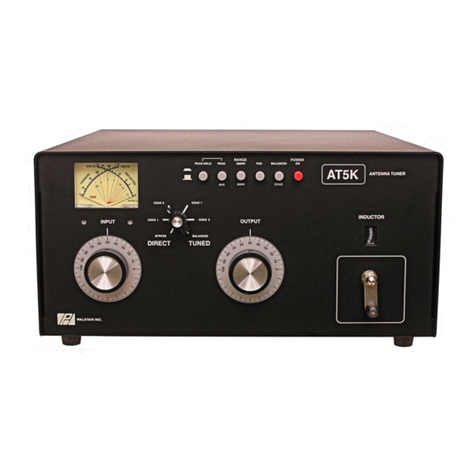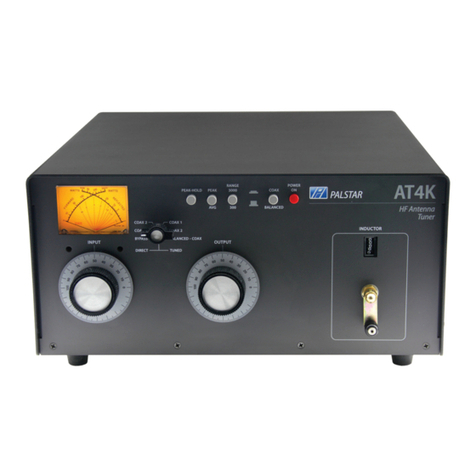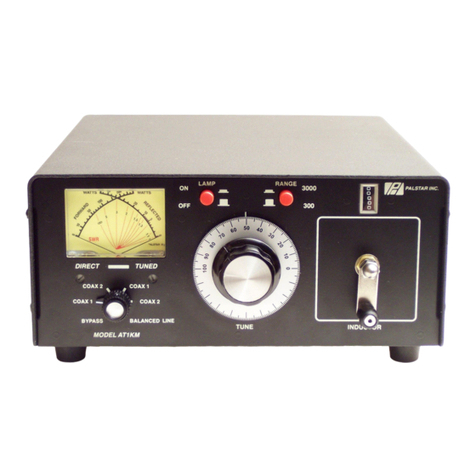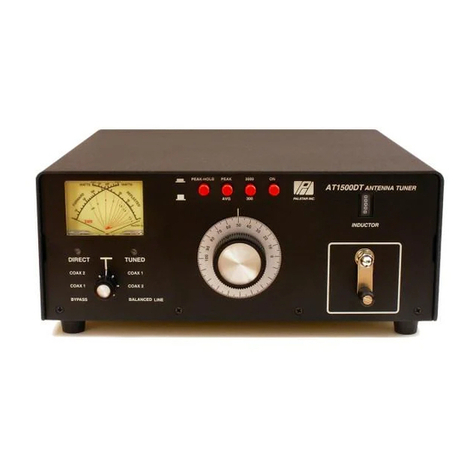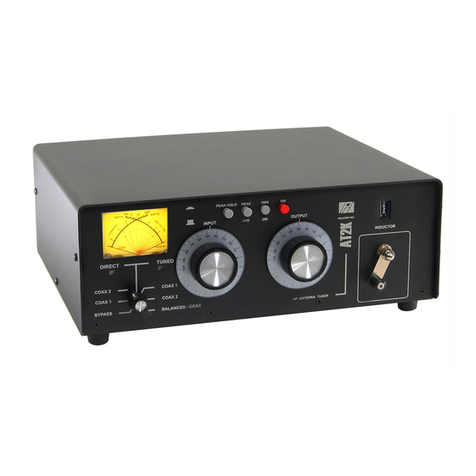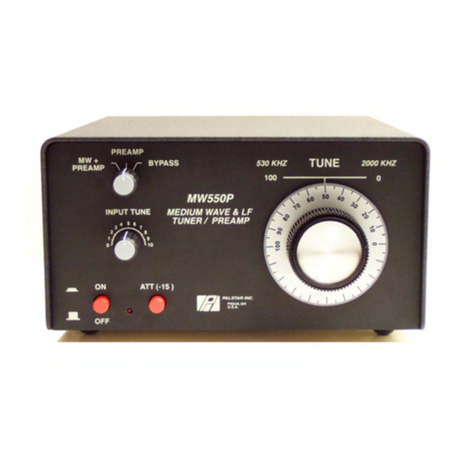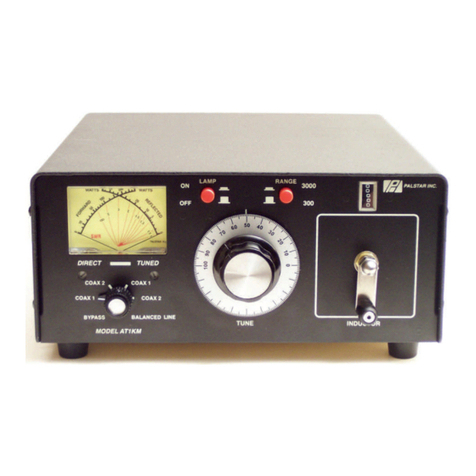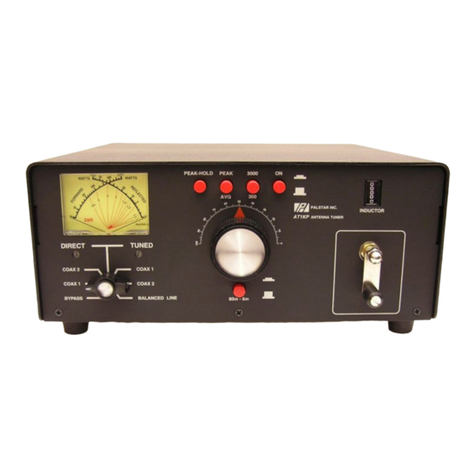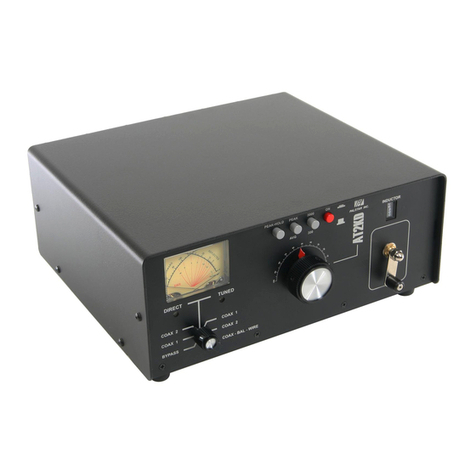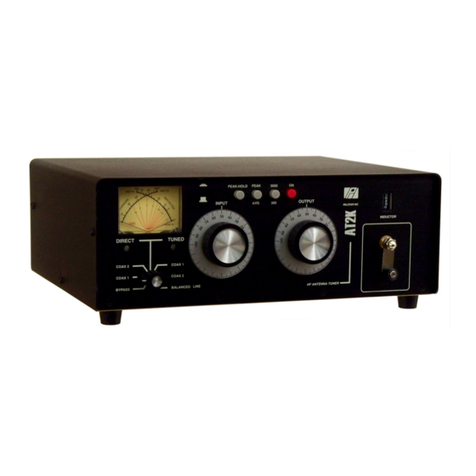IF THERE IS MAINTENANCE REQUIRED IT WILL MOST
LIKELY BE RELATED TO MECHANICAL ISSUES:
lROLLER SHAFT: the wheel rides should be lubricated
with our factory-made conductive grease.
This grease is available from Palstar at NO CHARGE.
lDIOXIT-D5 spray is always very useful for cleaning the
wire on the roller coil. Do not use the spray directly. Put
a small amount on a cotton cloth and hand wipe the
roller once a year while turning the roller crank.
lAll set screws are the CAP POINT type and take care to
carefully tighten these screws with a 5/16” allen key
wrench, which is available from any hardware outlet.
REPAIR OR REPLACEMENT MODULES
lAll PC Boards are removeable with standard American
tools in case of failure.
lThe rear panel (relay PCB) has custom S0-239
connectors that can be loosened witha 3/4“ socket and
4 x 6-32 keps nuts. Remove these nuts and two
connections from the variable and the entire relay PC
Board is removable without a soldering iron.
lBoth the front and rear panels can be lowered by
removing the 3 countersink screws from the bottom edge
of each panel.
MAINTENANCE REQUIREMENTS
The HF-AUTO is a matching system that is a complete stand-alone RF
Tuneable Auto T Network tuner.
It is completely independent of data from an external source to
determine frequency of tracking from Band to Band. As a result of this
feature, the HF-AUTO will function with any transmitting device
without interconnecting data cable attachments.
The HF-AUTO uses an RF Coupler that provides voltage and current
information from 1.8 MHZ to 54 MHZ.
This informtion is then processed by a pair of processing devices that
provide accurate phase oriented forward and reected values that are
used in two TI processors to calculate SWR.
This allows for detection of frequency and SWR at very low levels,
typically 2 watts, and is scaled to read these levels up to 1800 watts.
The processors establish the threshold for tuning and uses this
information to see if a tuning sequence is required.
A preset voltage for all the frequencies are used to determine the
positions of the variable dierential capacitor and the roller inductor
by a precise mechanical sprocket and kevlar belt system.
This determines with great accuracy and repeatability the exact
location of L&C needed to execute a tune sequence. This system
samples DC voltage and compares this to the intended frequency band
and sees that if the SWR is more than the preset tuning set by the user
then the steppers for L & C will adjust to that voltage which will
represent the mimimum SWR.
This will be better than 1.2:1, typically 1.05.
Page 2
Page 13
THEORY OF OPERATION
PALSTAR
